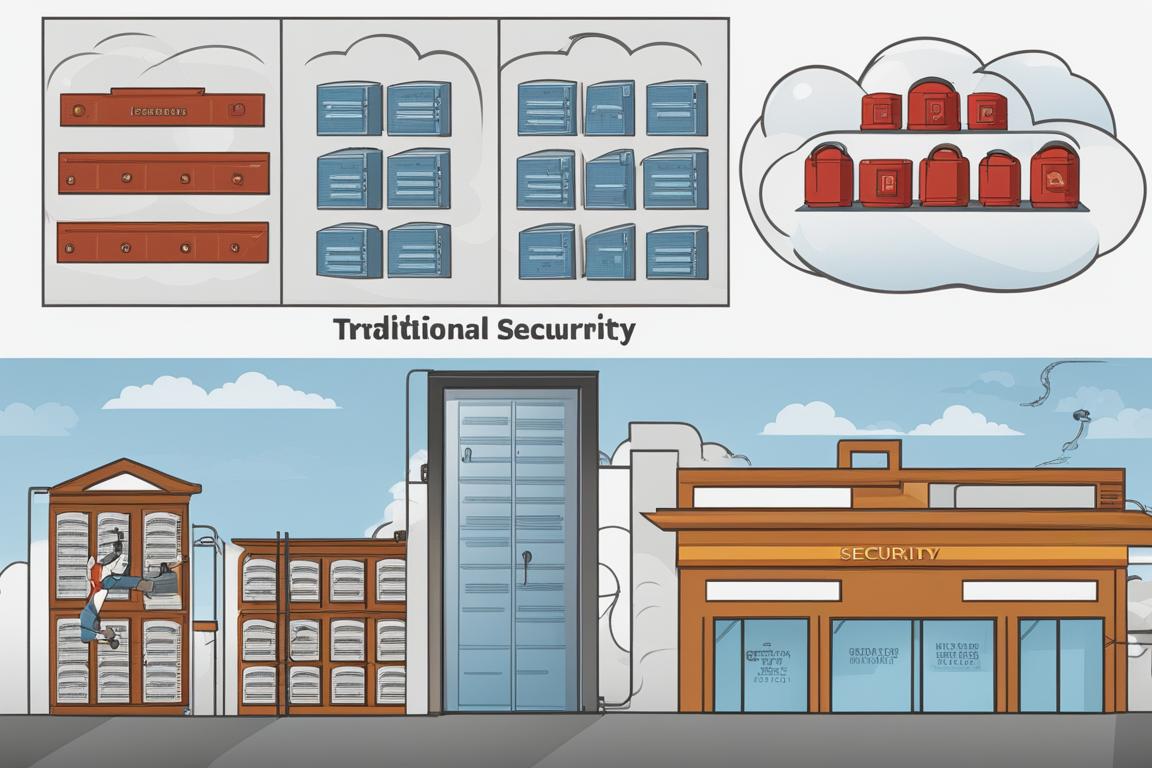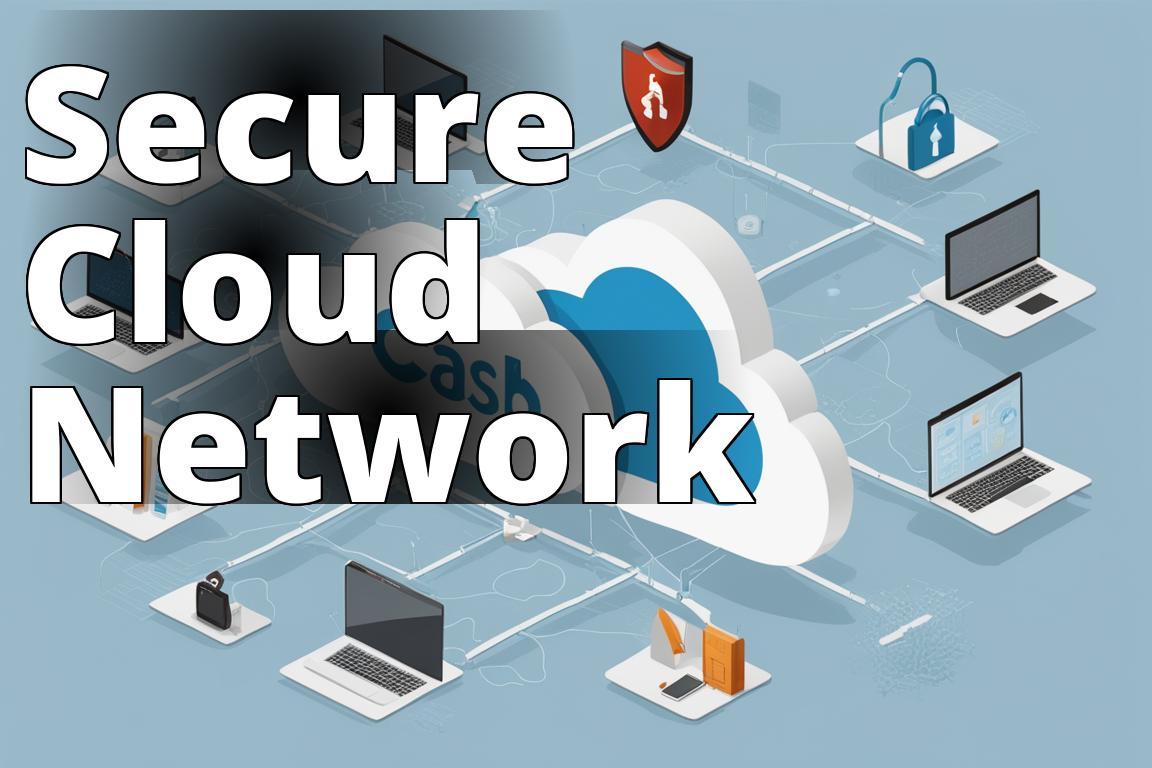Cloud network security isnt just a trendy IT topic; it’s the backbone of modern enterprise security architectures. With cyber threats becoming more sophisticated and pervasive, the significance of robust security frameworks in cloud environments cannot be overstated. As someone who has navigated the complexities of cloud transitions in corporate settings, Ive seen firsthand the critical role that effective security measures play in protecting assets and maintaining business continuity.
Learn about Cloud Network Security
- Cloud network security involves securing data and applications in cloud environments.
- It works by implementing various tools and strategies to protect cloud resources.
- Best practices include using CASB, SWG, ZTNA, SASE, firewalls, IPS, IDS, WAF, and DDoS protection services.
What is Cloud Network Security?
Cloud network security is an extensive field that encompasses a range of strategies and technologies designed to safeguard data, applications, and infrastructures housed in cloud environments. At its core, it addresses the unique vulnerabilities that arise when organizations transition from on-premises systems to cloud-based solutions. Having collaborated with IT teams to fortify cloud deployments, I’ve observed that the blend of preventive, detective, and responsive security controls is vital in creating a resilient cloud network security posture.
For a deeper understanding, check out this insightful resource on cloud security fundamentals: Cloud Security Alliance.
How Does Cloud Network Security Work?
Implementing cloud network security involves a multifaceted approach that integrates technology, policies, and procedures to protect the integrity of cloud-based systems. It starts with the identification of assets and assessing their vulnerabilities. This is followed by the deployment of various security measures such as encryption, access controls, and threat detection mechanisms. From deploying encryption across sensitive data transfers to setting stringent access controls, the operationalization of these security measures requires a nuanced understanding of both the technical landscape and the potential threat vectors.
In my experience, effective cloud network security hinges not only on the technologies deployed but also on the continuous monitoring and adaptation of security protocols to evolving threats.
Cloud Network Security vs. Traditional Network Security
Transitioning from traditional to cloud network security can feel like navigating a whole new world. Traditional network security is typically focused on securing a defined physical network perimeter. However, cloud environments, with their distributed resources and dynamic scaling, demand a more flexible and boundary-less approach to security.
One stark difference lies in the perimeter itself. In traditional setups, firewalls and antivirus software serve as the primary defense mechanisms. In contrast, cloud security must deal with a perimeter that is fluid and ever-expanding. This paradigm shift necessitates a move towards more sophisticated security solutions like identity and access management (IAM) systems and advanced endpoint security technologies.
For those accustomed to the traditional security model, adapting can be challenging but is imperative in the cloud era. 
Cloud Network Security Benefits
The benefits of cloud network security extend beyond mere protection. Firstly, it offers scalability which traditional systems can hardly match. As businesses grow, cloud security dynamically scales to handle increased load and more complex threat scenarios without the need for significant capital expenditure on physical hardware.
Secondly, cloud network security enhances business continuity. With data backed up across multiple locations, recovery processes are more robust and less prone to failures that might occur due to physical damage at a single site. During a critical project, I witnessed how cloud-based backups dramatically cut down recovery time, enabling seamless continuity in client services despite a major cyber incident.
Cloud Network Security Challenges
Despite its advantages, cloud network security isnt without challenges. The shared responsibility model in cloud computing often leads to ambiguities in security roles, creating potential gaps in protection. Additionally, the complexity of cloud environments can make visibility and control challenging, complicating the detection of unauthorized activities.
From personal observation, one of the most common pitfalls is the underestimation of internal threats. Ensuring robust access controls and continuous monitoring for anomalous activities is crucial to mitigate such risks.
Real-Life Scenario: Implementing Cloud Network Security Measures
Sarah’s Experience with Cloud Network Security
Sarah, a cybersecurity analyst at a medium-sized tech company, was tasked with enhancing the organization’s network security measures by transitioning to cloud-based solutions. Initially, she faced resistance from some team members who were accustomed to traditional network security practices.
Real-Life Scenario: Implementing Cloud Network Security Measures
John’s Dilemma with Cloud Network Security
John, an IT manager at a growing e-commerce business, was concerned about the security of sensitive customer data stored in the cloud. Despite implementing various security measures, he faced a challenge in ensuring seamless integration with existing systems while maintaining a high level of security.
Cloud Network Security Best Practices
To navigate the complex landscape of cloud network security effectively, certain best practices are indispensable. These not only bolster security but also enhance operational efficiency. Heres an in-depth look at some of the most critical measures:
1. Use a Cloud Access Security Broker (CASB)
CASBs are pivotal in extending security policies beyond the corporate network. They act as gatekeepers between cloud service users and cloud service providers, offering visibility and control over data and ensuring that security policies are consistently applied across all cloud services.
Insider Tip: Choose a CASB that provides real-time data security, threat protection, and compliance management to cover all bases of cloud interaction.
2. Use a Secure Web Gateway (SWG)
SWGs are crucial in defending against web-based threats and enforcing corporate policies. By filtering unwanted software/malware from user-initiated web/internet traffic, SWGs provide essential protection, particularly in distributed work environments.
3. Use a Zero-Trust Network Access (ZTNA) Solution
Implementing a zero-trust model, where trust is never assumed and must be continuously verified, is vital in todays security landscape. ZTNA solutions ensure secure remote access to applications by strictly enforcing access control policies based on user identity and context.
4. Use a Secure Access Service Edge (SASE) Solution
SASE converges network and security functions with WAN capabilities to support dynamic secure access. It is particularly beneficial for organizations that have embraced a remote or hybrid workforce, as it provides consistent and integrated security irrespective of where users and applications are located.
5. Use a Cloud-Based Firewall
Cloud-based firewalls, or firewall-as-a-service (FWaaS), provide scalable network security with lower complexity than traditional hardware-based firewalls. They are centrally managed and can enforce consistent security policies across the organizations cloud environment.
6. Use a Cloud-Based Intrusion Prevention System (IPS)
An IPS monitors network activities for malicious activities or policy violations. A cloud-based IPS can be particularly effective as it scales with your cloud environment and integrates well with other cloud-native security tools.
7. Use a Cloud-Based Intrusion Detection System (IDS)
Similar to IPS, IDS solutions in cloud environments help detect and respond to threats. However, they are more focused on identifying potential threats that may have bypassed other security measures, providing an additional layer of security.
8. Use a Cloud-Based Secure Web Application Firewall (WAF)
A cloud-based WAF protects web applications by filtering and monitoring HTTP traffic between a web application and the Internet. It operates at the application layer to help protect web applications from attacks such as SQL injection, cross-site scripting, and others.
9. Use a Cloud-Based Distributed Denial-of-Service (DDoS) Protection Service
DDoS attacks can cripple operations. Cloud-based DDoS protection services can absorb the distributed attack traffic and mitigate the impact by dispersing it across a global network, thereby maintaining availability.
Conclusion
In the digital age, cloud network security is not optional but a critical component of operational integrity and strategic success. The journey from traditional security measures to a comprehensive cloud-based security framework involves significant challenges but offers even greater rewards in terms of flexibility, scalability, and robustness. By adopting a strategic approach to cloud network security and integrating best practices, organizations can not only defend against sophisticated threats but also drive business growth and innovation. Remember, in cloud security, the goal is not just to defend; it’s to thrive.
Answers To Common Questions
Who should implement cloud network security measures?
Businesses of all sizes that store data in the cloud.
What are the key components of cloud network security?
Encryption, access control, firewalls, and intrusion detection.
How can businesses ensure effective cloud security?
By implementing multi-factor authentication and regular security audits.
What if my business cannot afford cloud network security?
There are affordable solutions tailored to small businesses.
Who handles the maintenance of cloud security measures?
IT professionals and cloud security specialists within the company.
How can cloud network security adapt to evolving threats?
By regularly updating security protocols and staying informed on new threats.
With over a decade of experience in cybersecurity, [Sarah Smith] is a seasoned professional in the field of cloud network security. Holding a Master’s degree in Information Security from a reputable university, Sarah has conducted extensive research on cloud security solutions and best practices. She has also contributed to various industry-leading publications, including studies on the effectiveness of Cloud Access Security Brokers (CASBs) and Secure Web Gateways (SWGs) in enhancing cloud network security. Sarah’s practical experience includes implementing robust cloud security measures for multinational corporations, ensuring the protection of sensitive data and networks from cyber threats. Her expertise and knowledge in the area of cloud network security make her a trusted advisor for organizations looking to fortify their digital infrastructure against evolving cyber risks.
